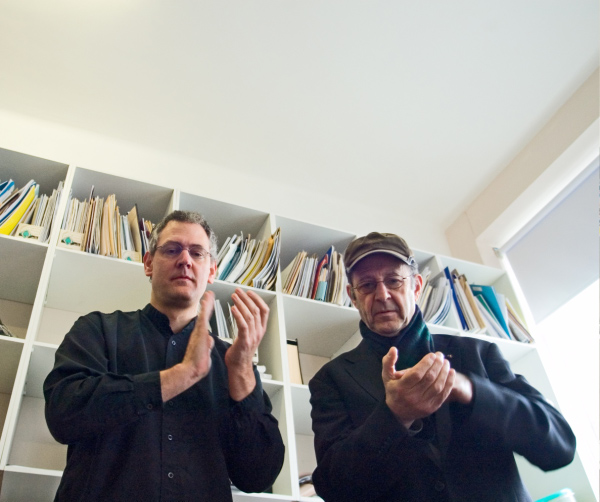Participation in music can sometimes get kind of a bad rap. My tendency is to associate it with somewhat patronizing practice of having the audience clap along or do some kind of call-and-response thing, which in practice usually only goes to show how little said audience remembers from the meager music education many of them probably had.
But this isn’t always what was meant by “audience participation” in music. Music being a participatory activity used to be somewhat of a given.
The Ghost of Music Past

In the 19th century, if you wanted to listen to music, you had a couple of choices. You could wait for the next concert at the nearest concert hall and hear whatever they were playing (if you could afford it). You could make friends with someone who knew how to play whatever you wanted to hear. Or, you could learn it and play it yourself on your piano, which was much cheaper and more affordable to the rising merchant class than it had been only a hundred years ago due to technological advances and decreased production costs.
Learning to play the music yourself, you would get to know it intimately and develop a deeper appreciation for the especially intricate sonatas of composers like Brahms. You might perform it in a parlor with a sizeable group of friends and make a party of it, trading off Chopin preludes, perhaps some original compositions, and maybe an improvisation challenge or two.
Music wasn’t just background music at these parties. This is what they did for fun instead of movies and video games. It wasn’t something they listened to while they did homework on their headphones. They got together with friends and participated.
The Ghost of Music Present
Today, the most common form of participating in any kind of musical activity is putting on a pair of headphones and zoning out. In classical music especially, a thick fourth wall divides the music-makers and the audience. Arcane rules about clapping between music and referring to the conductor as Maestro completely turn many audiences off even stepping into concert halls around the world. For most, the general impression of the classical community is one of stuffy, wine-drinking snobs.
It’s true that music education still costed a great deal of money and was reserved for the upper-middle class in previous centuries, but I would venture to bet (I’m definitely not a musicologist, so this is, indeed, a bet, not a claim) that a hell of a lot more upper-middle class folks were educated in music back then than are today.
I don’t want to sound alarmist. I love putting on a nice set of headphones and just letting music wash over me (though after 7 years of training it can be difficult to turn off my analytical brain…). I think modern technology and the experiences it brings with us are worth embracing. However, I also think it’s unfortunate that we’ve just about completely lost out on some of the widespread communal aspects of music-making.
The Ghost of Music Yet to Come

A few things can (and most some cases already are) help(ing) bring back these participatory sides of music-making. You probably won’t be surprised to see me start with video games.
A game/app/thing for iOS was recently released for “Clapping Music,” an old piece by Steve Reich for two clappers featuring one iconic rhythm repeated and continuously shifted by one rhythmic unit until finishes. The app does a great job at teaching the piece and allowing players of all backgrounds to learn it and master it at their own pace.
We saw Guitar Hero and Rock Band, both of which are scheduled to perhaps make a comeback in the coming years, bringing participation back to music in their own way. Although players were, in most cases, not actually playing the music, players still engaged with the music more than if they were simply passively listening to it, and entire parties were had that revolved around participating in the play of making music with these games.
The DIY community has been vibrant for decades all around the world, and with the Internet anyone can sell their own music online now. YouTube has allowed people to share knowledge, wisdom, and skills with regards to making music on common instruments. Going forward this could become an even bigger deal, especially if the classical music community gets their act together with engaging with today’s audiences.
Perhaps most importantly, a quality music education is something that every single kid should have access to. Hell, I’ll go ahead and suggest that every child should get a basic comprehensive education in all the arts. And I don’t just mean you learn to fake your way through recorders in 3rd grade and never touch an instrument again. Basic music theory and keyboarding should be taught to all too (and whatever the visual art equivalent might be; perspective? ¯\_(ツ)_/¯), so everyone can go forward with an arsenal of ways they can interact with art and music.
Waking Up
I realize at this point I’m moving into a somewhat unrealistic idealistic vision of the future that aims to bring back a part of the past that can probably never be brought back. Everyone interacts with and reacts to music very differently. Outside the classical music scene, many prefer music that can be sung or danced to, which I suppose is its own way of participation even though it’s not generally my preferred method. Maybe things aren’t so bad after all? Perhaps I’m only selfishly wishing that others saw music the same way that I did.
But I also truly feel that there’s something absolutely wondrous and life-changing that many people are missing out on.